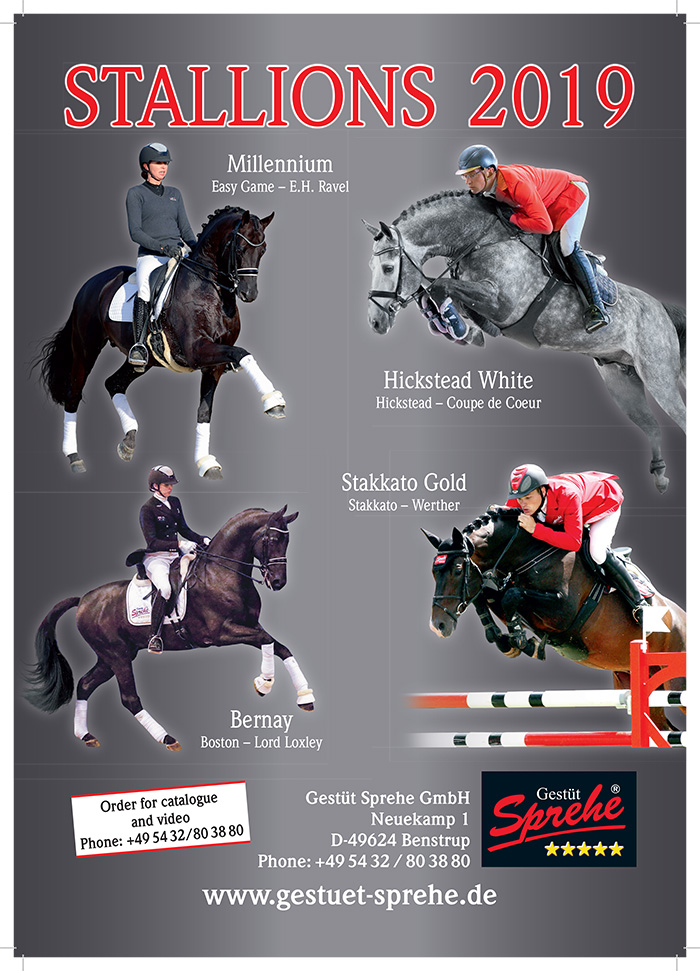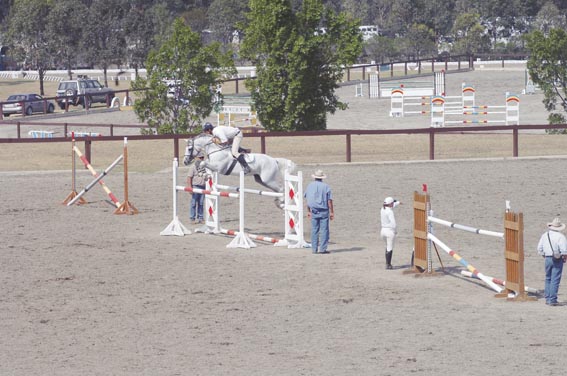This series of articles with showjumping master-coach, George Sanna will take you jump by jump through the obstacles you are likely to encounter in a showjumping round but before you even get to enter the ring, there is another fence that you should be able to use constructively to help you in your round – the practice fence.
According to George: “You have to remember that practice jumps are verticals and oxers, so this part will over-lap some of our later discussion of these sorts of fences.”
“There are some riders in Australia who do use their time in the practice ring wisely, but others who don’t – some are very unstructured.”
And what’s the difference between a structured and unstructured approach in the warm-up ring?
“Number one, having someone to help you. Number two, having a plan that sets out a progression in your jumps, a plan that is not only logical for all horses, but is especially tailored for your horse’s issues or weaknesses. Whether he has straightness issues, or scope issues and trouble jumping the taller verticals or something like that.”
“So your warm-up has to be directed a little bit towards the horse’s natural way of jumping, and what things need to be reinforced. Getting the dull horse alive, getting the hot horse cool – jumping sufficient numbers of jumps that prepare you well to deal with his weaknesses. If there is something on the course that you think will cause your horse a special problem – then you should try and think of some way you can prepare him for that.”
“For example, if you are getting ready for the jump off, and you are going to jump fence number one, come with a very very short turn right to a tall vertical to number two, then I think it’s a dam good idea to give him a short right turn back to a vertical at the practice jump.”
Story continues below the advertisement

When you say you need someone to help – is that just to pick up poles or do you need someone to be more directive than that…
“Absolutely the first, and preferably the both. Some people are not in the position to have their coach with them, but you must have a helper at the practice jump. I so often see amateurs – they are already nervous, they are already intimidated by all the professionals in the ring – and their time is getting closer and closer and in the end they pluck up the courage and head at a jump – which is way too big for them – because they have no-one to give them the jump that they need. The horse stops, and there is no recovering from that. I see that quite a lot and it is very sad. Often they’ve got someone standing on the edge of the ring, or ready with a video camera on the other side – that is not where they should be.”
Is that a problem with people riding over the top of you, and lots of other horses all trying to use the same jump?
“It is very intimidating for novice riders. I don’t find it intimidating in Australia because I’m the guy who is intimidating everyone else – although I do try to be fair and look after the others. But when I am overseas, and I don’t know everybody and I don’t know the routine so well, I get a little intimidated myself, even though I’ve done it many times and I am not a shrinking violet. It is intimidating and I would imagine for the riders coming on to the scene anywhere, it is very intimidating. Not knowing what to do, not knowing when you can demand the practice jump – especially if you’ve got no one there to help you.”
When can you demand the practice jump?
“You certainly have the right to the practice jump in front of anyone who is behind you in the draw. Different parts of the world have different systems. We operate on the European system for the practice jump where you normally have a vertical, an oxer and if you are lucky, a cross rail. The cross rail is just there to be popped, then the vertical and oxer is used quite often by two or three riders simultaneously and they whip it up and down.”
“You want to be jumping jumps, five horses before you go in to the ring.”
“It does create pressures, there are probably five or six people already jumping, it can create tension and it can create friction – even a bit of drama.”
Story continues below the advertisement

Are we aiming to build the horse’s confidence or do we want to give him a decent rap to wake him up?
“Depends on the horse. The deliberate rail technique is only for the professional – the amateurs will probably do it in the course of having the odd short or long distance, their horse is already alert. It’s the professionals who give their horses a very consistent even ride, that occasionally need to give them a little surprise with the distance or a surprise with the jump – by having something a little rampy and rising, several times, then square it up – if the horse is not sharp he is going to give it a rub – the amateurs do that without trying.”
Can you over-jump them in the practice ring?
“Many people do. I think an ideal warm-up is maybe a cross rail or two, a little vertical – when I say little I’m talking about where that horse is at, if it is D grader, a little vertical is 90 centimetres, if he is an A grader, it is probably a metre fifteen – a couple of times, off each rein, make it a little bit bigger, again, once off each rein. A little oxer, off each rein, bigger oxer, then a substantial oxer maybe once or twice. Normally finish with a tall vertical but you might finish with an oxer if the first fence is an oxer or if your horse is a little bit cold and you want to get him jumping a good strong one before you go in. So we are only talking about sixteen jumps. There are people who jump 30 or 40 – that’s way over the top, unless your horse is off its face and you are trying to get it into a bit of a routine – pop and pop and pop and pop. For a normal horse in a normal situation, less than twenty jumps for sure.”
Go to part 2 here






Breathing the same air as someone as successful as George is an honour, and I might be lucky enough to absorb something( not only oxygen)!!